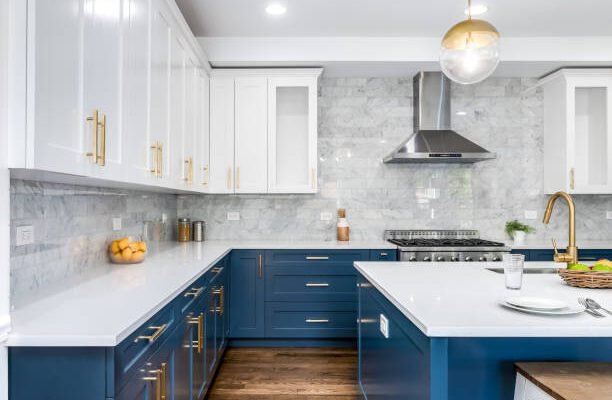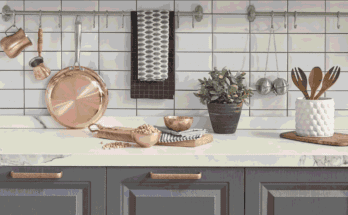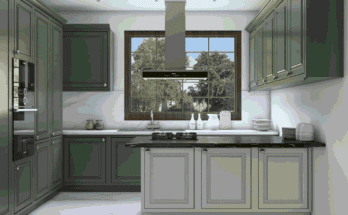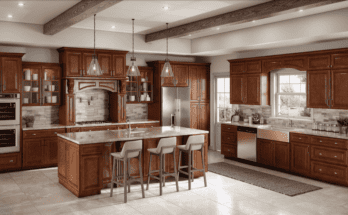1. Introduction
The kitchen is often called the heart of the home, and kitchen cabinets are its backbone. From daily meals to festive gatherings, your kitchen endures heavy traffic, making the durability of its components essential. Cabinets take up significant space and play a critical role in the room’s functionality and aesthetics. Choosing the right cabinet material not only enhances the kitchen’s look but also ensures it stands the test of time.
In this guide, we’ll dive deep into various cabinet materials—highlighting their benefits, drawbacks, and overall durability. By the end, you’ll have a clear idea of which material is best suited for your dream kitchen.
2. Wood as a Cabinet Material
Solid Wood vs. Engineered Wood
Cabinets made of solid wood add warmth and tradition to a kitchen and have the bonus of never going out of style. Nonetheless, they are potentially warpable if exposed to moisture changes repeatedly. On the other hand engineered wood such as veneer and composite better withstand moisture but have the look of real wood.
Common Types of Wood
Some of the common ones include oak, maple, and cherry, to name but a few. Oak brings just the right taste of the rustic style, and maple is famous for its barely visible grains and great wear resistance. Cherry has that rather rich reddish tint, incredibly well, and with years it only further develops this wonderful shade, giving the kitchen that special vividness.
Pros and Cons of Wood Cabinets
Both the beauty and the resilience of this material are valued, however, wood is fragile to scratches, dents, and heat and can be affected by humidity. It is also more expensive than engineered forms of the same material.
3. Plywood Cabinets
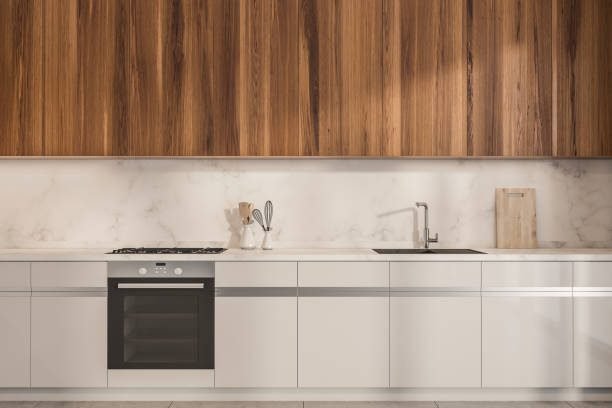
What is Plywood?
Plywood is developed by gluing together narrower slices of wood, creating a wide, light, portable, and very useful type of wood. It is extremely hard to wear and almost immune to cracking, so it is widely used in busy kitchen environments.
Advantages of Plywood Cabinets
Marine-grade plywood is denser and more moisture resistant than any grade of solid timber, which makes it ideal to use in the kitchen. They are less likely to warp, and most of them are cheaper than their hardwood counterparts.
Disadvantages and Cost Considerations
Even though handy, plywood can be more costly compared with some other types of engineered wood. However, sometimes the plywood tends to crack at the edges due to the exposure to moisture and needs regular varnishing.
4. Medium-Density Fiberboard (MDF)
What is MDF?
MDF is an engineered wood product made from wood fibers, wax, and resin, pressed into panels. It’s smoother and more consistent than plywood, providing an ideal surface for painted finishes.
Why MDF is Popular in Kitchen Cabinetry
MDF does not have a timber grain and as such can take a polished painted or laminated finish for a sleek look. It is cheaper, easier to procure, and immune to termite or pest attack.
Downsides of MDF in High-Moisture Areas
Moisture damage is one of the biggest problems of using MDF and is a major disadvantage of the material. The material of MDF is not so resistant to water, and when the material comes in contact with water, it gains volume and starts changing its shape, which would be very suitable for kitchen areas, where suddenly dampness and humidity may occur.
5. Particleboard Cabinets
How Particleboard is Made
Particleboard is produced using wood chips, and sawdust accompanied by a resin binder. It is a cheaper material compared to solid wood and plywood and is also very lightweight.
Benefits of Particleboard for Budget-Friendly Kitchens
Particle board is amongst the cheapest materials that a homeowner could use in flooring their home. Its versatile application makes work easier, and installation a lot quicker.
Common Issues with Particleboard Durability
However, particleboard is very cheap, and at the same time, it can easily get damaged. This material is relatively weaker than others, more sensitive to humidity, and prone to chipping or cracking, particularly if overloaded.
6. Laminate Cabinets
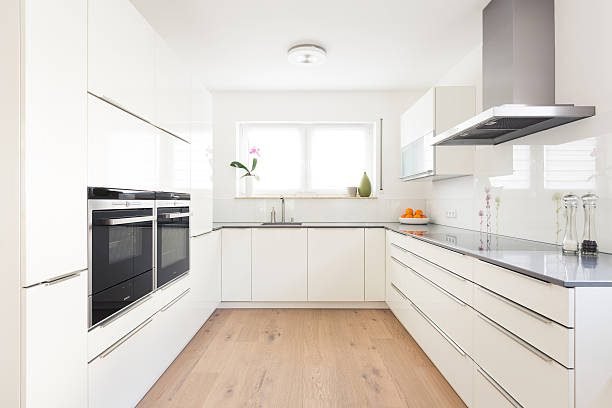
Overview of Laminate Materials
Laminate is made by fusing multiple layers of synthetic materials, creating a durable, easy-to-clean surface. It comes in two forms: high-pressure and low-pressure laminate.
High-Pressure vs. Low-Pressure Laminate
High-pressure laminate (HPL) is more durable and resistant to impact, making it suitable for busy kitchens. Low-pressure laminate (LPL) is more affordable but less durable and prone to peeling over time.
Best Uses and Care for Laminate Cabinets
Laminate cabinets are used where one desires to achieve a smooth and sleek look of the kitchen. They are not hard to clean and if care is not taken with sharp objects or exposure to heat, the surface gets spoiled.
7. Metal Cabinets
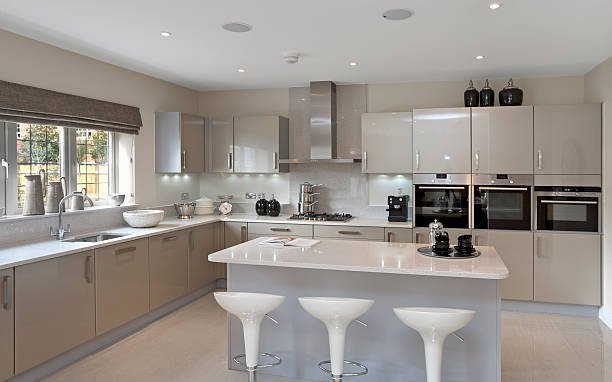
Types of Metals Used
Stainless steel and aluminum are the most popular metals used in the fabrication of kitchen cabinets. Stainless steel produces a glossy and trendy appearance, while aluminum is light and antirust.
Benefits of Metal Cabinets in a Modern Kitchen
This kind of cabinet is fire-resistant, pest-proof, and most of all, can withstand the daily traffic in the kitchen. It is easy to maintain them and produce industrial/modern decor.
Drawbacks and Costs of Metal Cabinetry
It is not very astonishing to see that the body of metalwork can at times be dented and scratched easily. Also, it has an industrial appearance, and stainless steel is much more costly as compared to wooden types of cabinets.
8. Thermofoil Cabinets
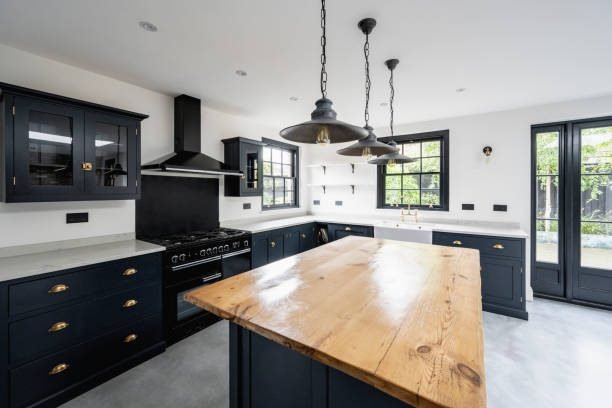
What is Thermofoil?
Thermofoil is a joinery applied in the form of vinyl to MDF or particleboard substrate. It gives a perfectly even surface that resembles either wood or paint.
Pros of Thermofoil Cabinets
Some of the thermofoil cabinets are very cheap and waterproof, which is essential in the kitchen. Available in various sizes and in a myriad of colors and finishes.
Cons of Thermofoil Cabinets
The thermofoil used renders it vulnerable to heat damage such as peeling or even warping. It is also almost impossible to restore once it has been broken as well.
9. Glass Cabinets
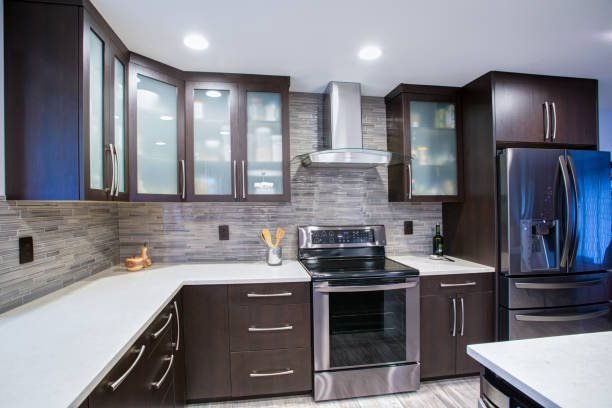
Types of Glass Used in Kitchen Cabinets
Especially glass front cabinets give a classy look to any kitchen that is done. The available options range from frosted, clear, textured, or even a colored tinge that clients might want in their design.
Best Uses for Glass-Front Cabinets
Cabinet cases are good, especially when one wants to display good dishes or any other fancy item. It makes compact kitchen areas seem even more lighter and more spacious than wet areas.
Downsides of Glass in a Functional Kitchen
Glass is, most of the time, brittle and may crack or even break apart. That’s why it is necessary to clean it often as easily noticeable fingerprints or smudges can make it look dirty.
10. Bamboo Cabinets
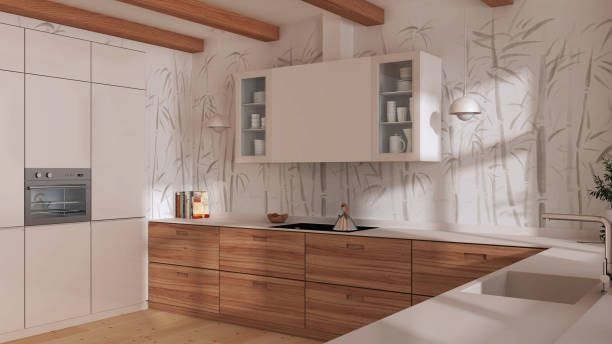
Eco-Friendliness and Sustainability of Bamboo
New to the list is bamboo; this material is even more enduring than most hardwoods, and it grows much faster than other typical woods. It is environmentally friendly for those homeowners who are concerned about the environment.
Durability of Bamboo as a Kitchen Cabinet Material
Bamboo is stronger than several other hardwoods and is free from scratches and dings, which could make it suitable for use, especially in kitchens.
Potential Challenges of Bamboo Cabinetry
Some bamboo types are rather pricey and their hue may vary depending on the level of light it is exposed to. It is also potential to swell for the form that is very sensitive to high moisture areas.
11. Acrylic Cabinets
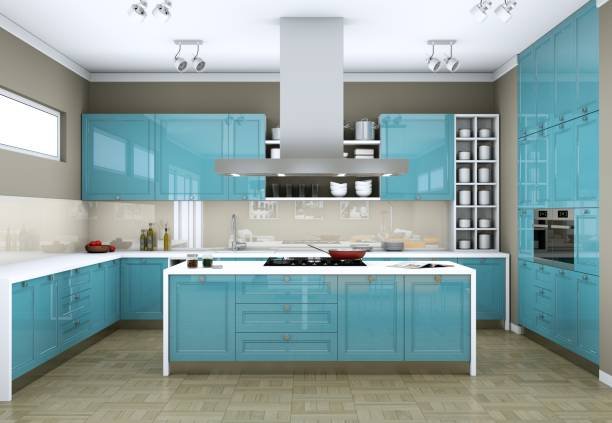
Benefits of Acrylic
The acrylic cabinets provide a glossy, classy appearance to fit right in the modern world and complement a kitchen perfectly. Families will particularly love them because they are moisture-proof and also easy to clean.
Acrylic’s Durability and Care Tips
They are also very hard-wearing but are somewhat brittle and easily scratched. Another has stated that proper washing using the microfiber cloth keeps it shiny most of the time.
Drawbacks of Acrylic in Busy Kitchens
Acrylic is quite hard and therefore durable, but it easily catches fingerprints and also scratches; so it is not as suitable for families with children or pets.
12. Expert Insights
Many kitchen design professionals recommend balancing aesthetic desires with practical needs. According to interior designer Sarah Smith, “Choosing a cabinet material that matches both your lifestyle and the environment of your kitchen will lead to a longer-lasting investment.”
13. Future Trends in Kitchen Cabinet Materials
As we shift our focus towards sustainability, homeowners are also looking at alternatives such as bamboo and recycled wood. There is also a technology issue where improvements in materials that improve the lifespan of deteriorating products are now coming into focus.
14. Practical Tips for Choosing the Right Cabinet Material
However, you should also think about the humidity level in your kitchen, how often it is used, or how much money you are willing to spend. Of course, it looks beautiful, but longevity and usability should be valued.
15. Conclusion
Selecting the right cabinet material is essential to creating a beautiful, durable kitchen that will last for years. Whether you prefer the natural beauty of wood, the modern appeal of acrylic, or the sustainability of bamboo, there’s a perfect option for every style and budget. Take the time to weigh the pros and cons of each material, and you’ll create a kitchen you’ll love for decades.
FAQs
[saswp_tiny_multiple_faq headline-0=”h3″ question-0=”What is the most durable material for kitchen cabinets?” answer-0=”Plywood is considered one of the most durable materials for kitchen cabinets due to its strength, moisture resistance, and ability to withstand high traffic without warping or cracking. ” image-0=”” headline-1=”h3″ question-1=”How does solid wood compare to engineered wood for kitchen cabinets?” answer-1=”Solid wood offers a traditional, timeless look but is prone to warping in humid conditions. Engineered wood, such as plywood or MDF, provides better moisture resistance and is often more affordable, while still retaining a wood-like appearance.” image-1=”” headline-2=”h3″ question-2=”Are laminate cabinets a good choice for a durable kitchen?” answer-2=”Yes, laminate cabinets, especially high-pressure laminate (HPL), are a durable, easy-to-clean option that can resist impacts and moisture, making them suitable for busy kitchens.” image-2=”” headline-3=”h3″ question-3=”What are the benefits of using bamboo for kitchen cabinets?” answer-3=”Bamboo is an eco-friendly and highly durable material that resists scratches and dings. It’s a sustainable option for those looking to reduce their environmental footprint while still having durable cabinetry. ” image-3=”” headline-4=”h3″ question-4=”Is MDF suitable for kitchen cabinets in high-moisture environments?” answer-4=”While MDF is cost-effective and has a smooth finish perfect for painting, it is not ideal for high-moisture environments, as it can swell and warp when exposed to water. Proper sealing or avoiding excessive moisture exposure is necessary.” image-4=”” count=”5″ html=”true”]

